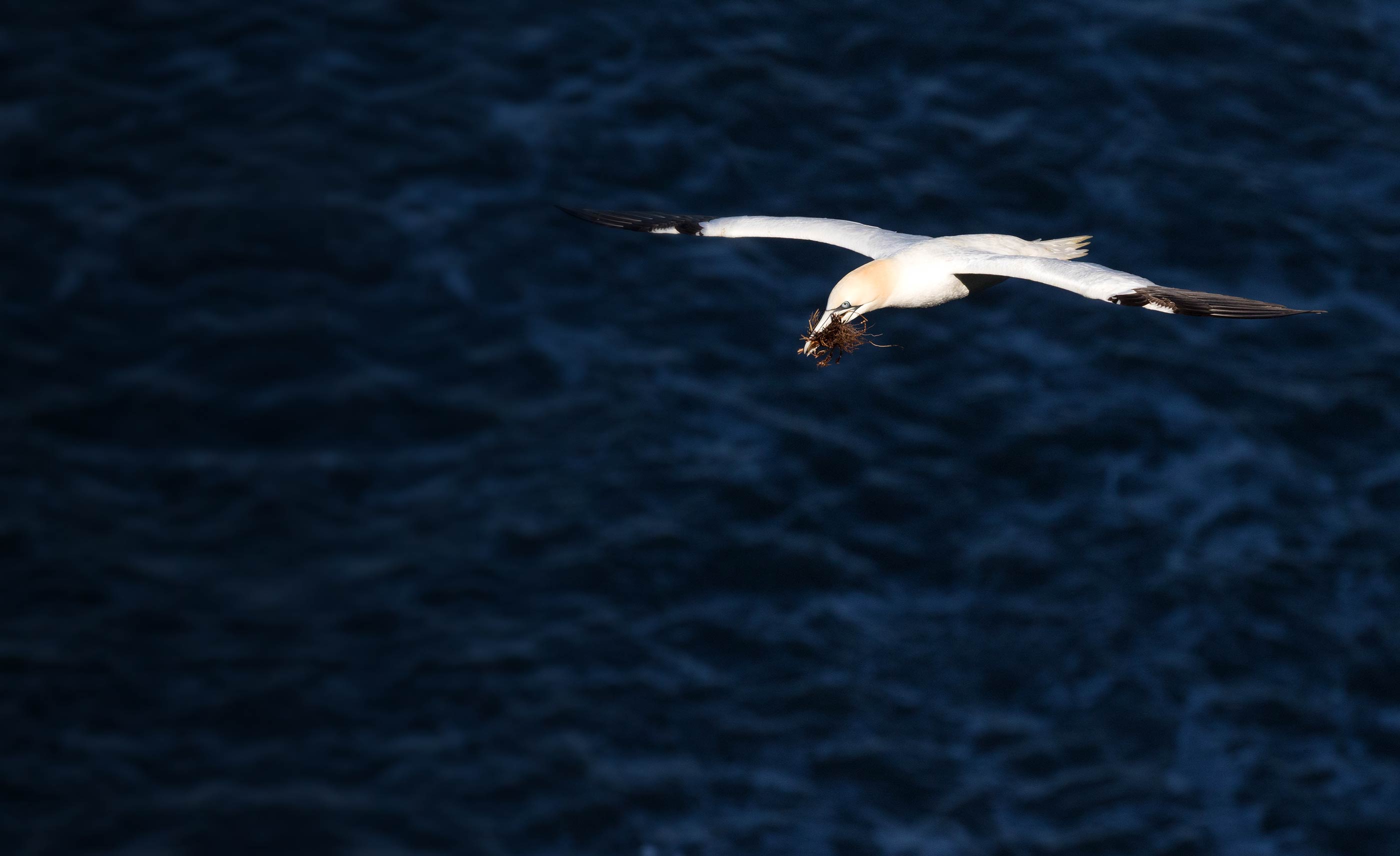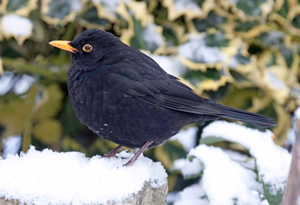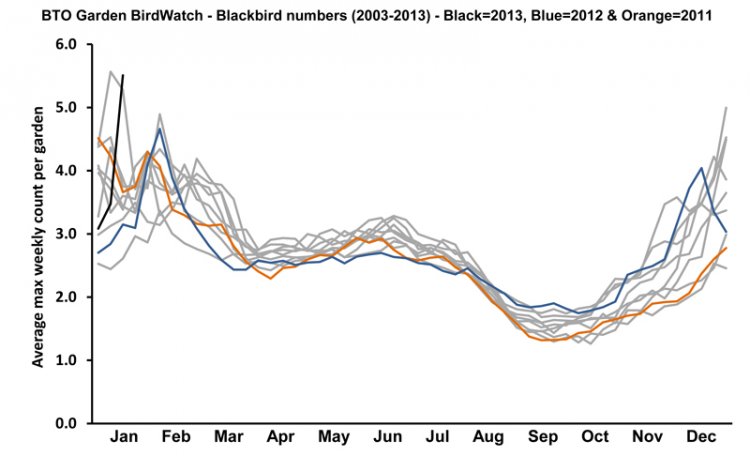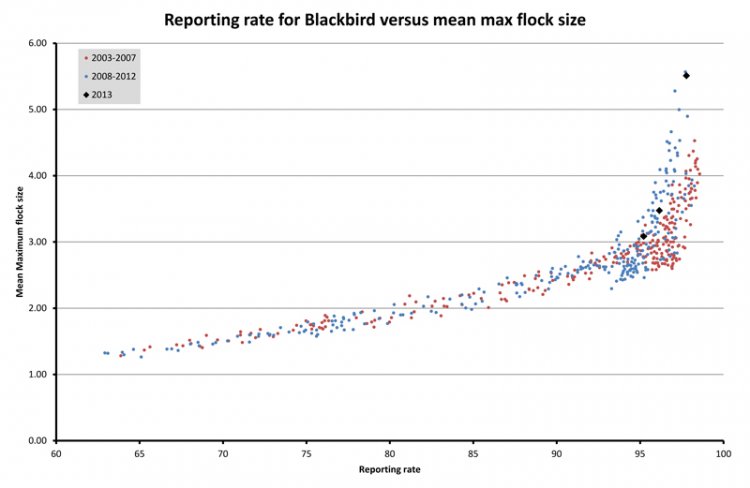Winter weather drives Blackbirds into gardens
Blackbird, by John Harding.
One of the great strengths of the BTO Garden BirdWatch is that our participants submit their records on a weekly basis. This means that we can see what effect bad weather has on our birds. With several thousand participants submitting records through GBW Online, it also means that we can spot the effects of bad weather very quickly.
To give you a flavour of how January's snowfall has affected our birds we have looked at our Blackbird data by way of example. Blackbird is a common and familiar garden species, whose breeding population is supplemented in winter by the arrival of birds from elsewhere in Europe.
In terms of garden use by Blackbirds, the average numbers seen during the breeding season are fairly stable, increasingly somewhat through the summer as young enter the population. There is then a very pronounced autumn 'trough' - most likely the result of individuals moving into the wider countryside to take advantage of the berry crops available there and/or others becoming more secretive during their annual moult. We then see a return to gardens, with average numbers increasing week on week through to the end of the year.
This general pattern is modified by other factors, such as the success of the breeding season or the weather during winter. This winter, for example, we saw average numbers in gardens increase throughout October and November before they suddenly fell away with the arrival of a mild and wet spell (see blue line in the graph below).
The arrival of the cold weather and snow during the second two weeks of 2013 (see graph above, black line) saw a sudden leap in the average numbers of Blackbirds in gardens. In fact, for the week beginning 13th January, the average count (which was 5.51 individuals) is our second highest from a decade of recording (see graph below). The snow that followed later that week may have driven even more Blackbirds into our gardens, something that we'll be able to report on after this 'count' week has ended and our observer can enter their records.
Of course, it is not just Blackbirds that have increased their use of gardens because of the snow and you can view live results for Brambling, Chaffinch and others elsewhere on our website. If it remains cold then we predict a busy RSPB Big Garden BirdWatch.
The graph above shows a measure of garden use (Reporting rate) against the average number of individuals seen on a weekly basis. As you can see, average numbers increase as the proportion of gardens being used increases. Each dot represents a single week and we have split these into three groups, those from 2003 to 2007, those from 2008-2012 and the three weeks from 2013. You can see that one of the weeks from 2013 (week 3) has the second highest average count for Blackbird that we have encountered over the last decade.









Share this page